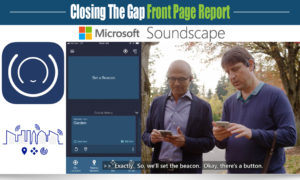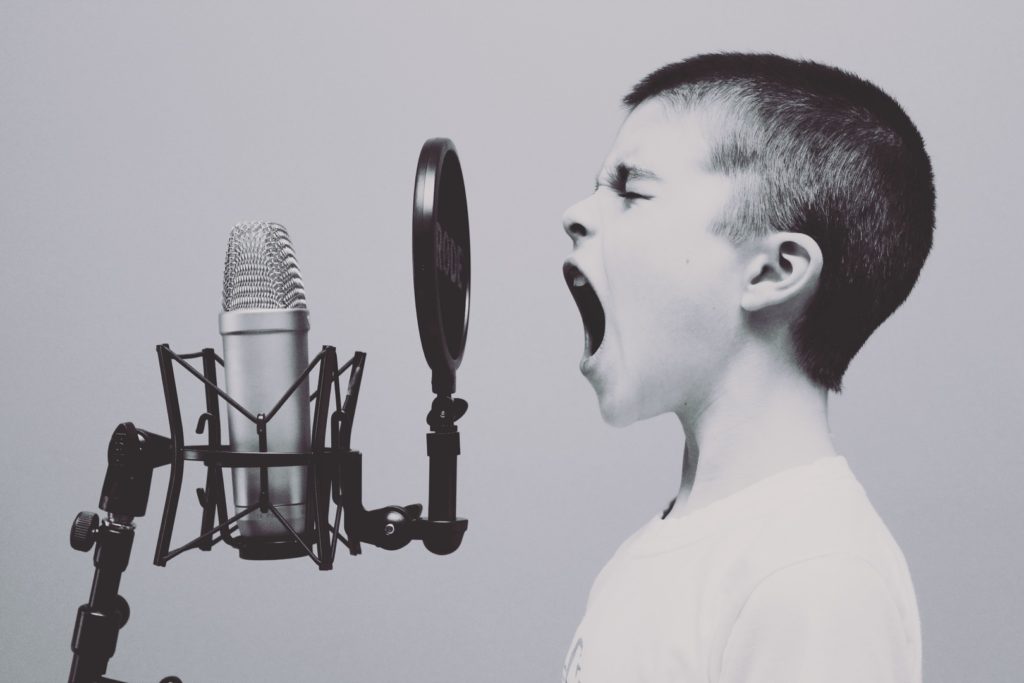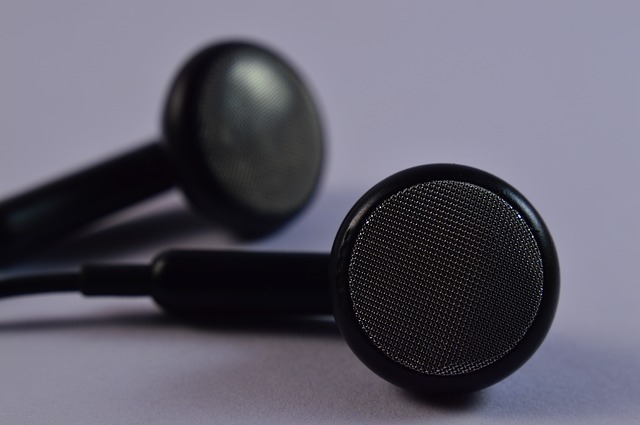The Maker and the Seller
For this article, I really wanted to show off both ends of the near range audio spectrum. I decided to interview two audio professionals on both the quality sound creation side as well as the sound sales side. You can hear the full conversation on Episode 46 and Episode 47 of the Sound In Marketing podcast.
Andrew Bellavia of Knowles Corp. has been a component supplier to the audio industry his whole career. During this time, he has witnessed quite a bit of change in the audio space. Andrew has seen first hand the change in users preferences as well as the change in a company’s level of investment in and selling of audio experiences to said users.
Charles Balderston of What Sounds Design works in Audio UX. Charles has spent his entire life fixated on sound and specifically tone. How sounds make people feel and how we can utilize this to create more immersive and intuitive audio experiences has been his driving force.
Sales Vs. Design

Both sales and design play a part in what brands are looking for and what they should be looking for. For example, as technology gets better and better, consumers expect technology that is better and better. They are no longer satisfied with the quality of those free earbuds that you get with your phone and other tech products. They are aware of a “better” audio experience and they are less and less willing to settle for sub par.
I see it as a back and forth game. The industry designs enhanced products. The consumer wants it. The sales departments then scramble to supply said enhancements when pitching their product. Then the audio industry enhances their design yet again. The consumer wants it. And so continues this rapidly increasing demand for better and better. It’s hard to keep up.
It’s crucial for sales and design teams to work together to create the most cohesive browsing and buying experience possible for a constantly changing and demanding consumer.
Why Care About Near Range Audio?
There’s nothing like walking down the street with your headphones in your ear and your favorite song comes on. You’ve got your soundtrack for the moment about to pour through your senses and then…. the sounds not right. It’s scratchy or the connection isn’t good. And just like that, that amazing moment passes.
You’ve just fallen victim to a bad audio experience.
Audio should bring joy and fulfillment to the user. Whether it be a podcast, communication via smart speaker, music, video game sound effects, etc. Audio fulfills us in many different ways and for many different reasons.
Creating a voice and conveying and understanding emotion is what, as marketers and brands, we should be focusing on. We must be thoughtful of our audio marketing especially as tech moves forward. We must be aware of it and program content for new devices and platforms accordingly.
Through sound, the world is different; the experience is different.
Headphones are where you get that intimate and most personable and emotional experience. We need to be mindful of it as well as treat it as a huge opportunity for our brand growth.
Context Within Sounds and Platforms

Sound and music have to be a cohesive thought. For example, you can’t have a thrilling podcast intro with a high production quality voice over and theme song and then dive into the show with bad audio where the narrator sounds like they’re on the other side of the room or in a box.
Context through each other’s tone and inflections is key in getting the most out of a brand’s audio experience so quality is overtly important.
Sound complements sound just like sound complements visual.
Also important is messaging and specifications of assets that adapt and represent each medium’s functionalities and intents. This avoids breaks and breakdowns within the experience and allows for a happy more satisfied consumer.
One great example Andrew brought up was about the new function of the short range bluetooth experience within some earbuds. What if you’re walking down the street and walk past McDonalds and you their mnemonic “Bah da bah ba baaaah”. You respond with “Google, give me walking directions to the next McDonalds”. If the sound does not compliment the experience of the visual, then it doesn’t matter if that person may be hungry. They’ve been disrupted from their experience and are turned off by your messaging. You’ve just lost a potential sale.
Microsoft Soundscape

To go further into that, Charles cited a project that Microsoft has been working on called Microsoft Soundscape. Soundscape “is a research project that explores the use of innovative audio-based technology to enable people, particularly those with blindness or low vision, to build a richer awareness of their surroundings, thus becoming more confident and empowered to get around.”
Soundscape is a 3D audio immersive experience using sound as a reference to location.
The Soundscape app creates a “beacon” of sound in stereo that gives a non-sighted person perspective instead of verbal commands like “go left, go right”. Turning your head or body does not change the direction of the sound. So, using Andrew’s earlier bluetooth example, you know that McDonalds is to the left and not to the right without any visual cues and without a disruption of what you are currently doing.
A Rich Near Range Audio Experience

We see the world graduating to a more quality sound experience. Beats taught the consumer that that experience was worth $200 for a headphone. As audio consumption becomes more mobile and experience becomes more varied, this has only increased. And people KNOW what good sound sounds like.
Everyone’s perception of sound experience is getting better.
Gamers for example, expect top bar sound experiences. This is especially important when they are playing from their phone or smaller devices. Where visual falls short, sound has to be that much more at play. “You need to be able to hear that arrow flying by you clearly.”
And with that example in mind, with the smaller experiences in general, sound needs to fill a lot more space. With a massive screen, you can get away with more visual elements to pick up the slack where other elements may be lacking. But with a small screen, you have the ability to boost your audio quality to compensate for the lack of sight.
This “advantage” that audio has over the small screen is fascinating.
An immersive audio experience from a 6 inch screen has the potential of giving a better experience than in a theater or on a big screen TV.
The Loudness Wars

Boosting the audio quality on near range and immersive audio experiences does not mean boosting the volume. Through the years, we have become obsessed with louder and louder. We think THAT is where the quality lies.
Most notably with music. In popular radio, everyone was competing to be as loud as possible. Because of this, when an engineer would master a track, he or she would purposely over compress. A perfect example of the height of this practice is the Red Hot Chili Peppers “Californication”. You can actually hear the distortion in the track. Boosting audio actually decreases the quality thus defeating the purpose.
You have a ceiling to how much you can boost sound in a mix. Once you reach that ceiling, audio quality becomes distorted and your messaging loses its effectiveness.
Standardized Audio Regulation
What if someone standardized audio? Charles brought up an interesting idea. This is “a great opportunity for hardware manufacturers to step in and say, ok, we can handle this.”
For example, what if Sony was known as the company that standardized their sound? A consumer could buy their products knowing that the ad volumes as opposed to the programming volume would be regulated so that they wouldn’t have to be constantly turning down or up that device’s volume depending on what was playing. It’s only a matter of time, I believe, before people will expect this.
How can we [the company] take this problem and make it ours. And in so doing lay the foundation and become the establishment?
Andrew sees this problem as one that the consumer will “work out” naturally. If one particular channel gets the “sound” wrong, people will abandon it and likewise will the advertisers. Thus forcing hardware and software companies to regulate.
Innovations and Cool Finds

Andrew talked a little bit about ambient awareness. This is when your device can tell when to dial in or dial back the amount of ambience you experience. A great example of this is in hearables and hearing aids. The technology somehow understands the differences between the frequencies of dogs barking and cars driving and the sound of a person speaking and knows to focus on the latter. He even said that there are outdoor speakers that are really moving ahead in the ambient awareness space.
Doppler Labs was one of the pioneers for realizing the potential of in-ear audio experiences. They saw that computing would eventually move within the body and into the ear and voice would become a prime way of communicating with said technology. One of the products they came up with was Here One. Here One was a pair of wireless 3-1 earbuds that combine the usage of audio streaming, noise cancellation, and speech enhancement. The company unfortunately shuttered in 2017 but with what is happening now, I don’t see how this isn’t the direction we will continue to take with hearables.
The guys also commented on the new Air-pod Pro’s and that they are on their way with a really good product with much better audio quality then its predecessor. The Air-pod, as well as products like the Sony WF-1000XM3 have noise cancellation capabilities. Sony’s has a slightly lower price tag.
No one has gotten the pass through audio just right yet but they are definitely getting closer.
Another cool feature that Charles referenced was that Apple also has the bluetooth stream function where you can share with others iPods your stream. Andrew said that’ll be a universal standard soon and honestly I’m surprised it took so long. We’ll all about sharing this and that on social media. Why not share on your earbuds?!
Predictions and Thoughts
Personally, I’m looking forward to the day where our AI is contextually aware of our surroundings and our expectation of what our surroundings should be doing for us. For example, we are constantly on the move and we are also constantly switching devices. Alexa may be a prompt that we want to use on our phone when we’re out and about but at home we want to speak to her through our smart speaker. Alexa being aware of where we are and triggering herself depending on said circumstance would be huge.
I realize that you can change your trigger words currently, but I’m kind of thinking beyond that possibility into something bigger.
Taking steps towards a platform agnostic experience is also very exciting. Alexa reported recently that they will soon have the ability to launch skills and apps on both Android and iOS! I feel like there is more than this that is possible, but it’s a step in the right direction.
There are so many different devices out there that seem to be equivalent to each other that simply don’t recognize each other yet. What if our Google Home devices could communicate with our Amazon devices? What if our GE stove could talk to our Whirlpool dishwasher? Putting that down in writing now makes me think that our world just might be about to get very very noisy. But I digress.
Another question that I’ve had for a while now is how is voice search choosing what it presents to us? With a visual search through a search engine, you search for chicken soup recipes and you’ll get millions of results with about 15 – 20 just on the 1st page. You can take in 20 or so billboards with information while you’re walking or driving down the street. With a sound search, that much information doesn’t work. It would turn into a sound cacophony. You only get one suggestion. So how do they decide what that one suggestion will be?
I’ll be sure to do a deep dive on this eventually too.
Related Articles on Sound In Marketing
For more on Sound In Marketing, check out:
How Dove Succeeded Creating a Massive Sensorial Experience
Audio Alchemy with Steve Keller of Pandora
What Does A Black T-Shirt Sound Like?
POS Sounds Proven to Be Brands Weakest Link
Let’s Make Sound On Purpose
Excited to explore your brand soundscape? Dreamr Productions would love to help. Contact us today for more information.


